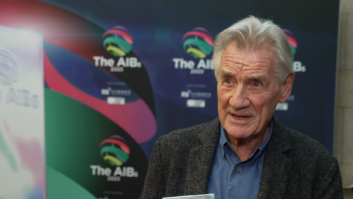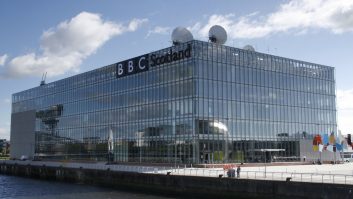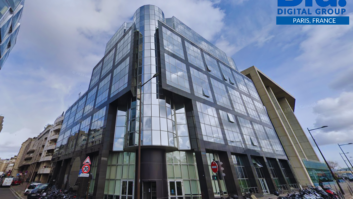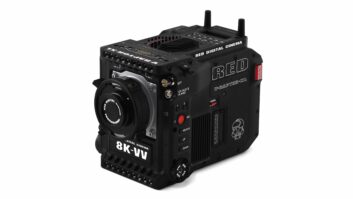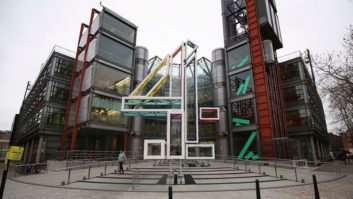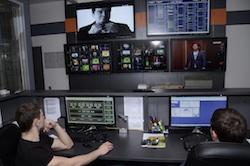
In December 2010, Kiev-based Zeonbud was selected by the National Television and Radio Broadcasting Council of Ukraine to be the country’s nationwide provider for digital multiplexes. It was also decided that the digital network must be ready for Euro 2012. Philip Stevens investigates.
During a pilot phase lasting several months, testing was carried out using several different format options. In the end, DVB-T2 was selected, and Zeonbud became one of the first European operators to create a complete infrastructure for the terrestrial transmission using that format. The network went live in September last year, with 150 transmitters being fully commissioned by the following month. The complete roll out of sites has now been completed.
“The analogue service in the Ukraine is scheduled to be switched off in 2015, and our licence called for 95% of the population to be covered by the digital terrestrial network,” explains Vladimir Prokopenko, head of Zeonbud’s network operations centre. “This network comprises 167 transmitter sites, each carrying four DVB-T2 multiplexes. These four multiplexes carry a total of 28 nationwide channels and four local channels. Up to eight of those 28 national channels can broadcast in HD format. The power of the transmitters ranges from 2kW to 50W.”
In all, 664 transmitters were provided at the sites by the German operation of Rohde & Schwarz. Signals from Zeonbud’s headend will be delivered to the sites using capacity on SES Astra’s 31.5° East orbital position satellite.
Versatile headend
Harris has equipped the headend, which is located in Kiev. “We provided the complete solution for the Zeonbud facility,” says Marcel Tölkemeier, solution architect (video headend) at Harris. “The core component is the Harris Selenio convergence platform supplied with powerful universal encoder modules used for H.264 encoding.”
This convergence platform has the flexibility to install internally one of 14 application modules. Located inside each Selenio frame at the Zeonbud facility are nine encoders and two multiplexers. Each encoder provides a high quality compression of the incoming video signal, while the multiplexers have a powerful engine to combine all the elements needed for DVB-T2 transmission. The whole system is built to be fully redundant to prevent operational problems.
“We also provided the Platinum SDI router matrix with integrated HView SX multiviewers, the Harris Navigator for monitoring and control purposes and the MSA-300 as a multi format analysis tool. This tool provides the means to detect possible errors on all parallel channels,” confirms Tölkemeier.
He adds, “This is one of the largest TV networks in Europe where the special challenge was to verify that all new standards are given by Harris products. In addition, the change from analogue to digital transmission is always a big challenge, but this has been successfully completed.”
German company Kathrein supplied transmitting antennas, with power ratings of between 1kW and 5kW at 159 of the broadcasting sites. The sizes range between 1150mm up to 5750mm.
“Kathrein has a wide range of broadcast antenna products,” states Sergey Yelov, director of Selteq, Kathrein’s sales partner in Ukraine. “Our pipe plug and play antennas are easy to plan and install. Further, the panel antenna systems are very flexible to cover specific needs, meaning we can cover all the precise design consideration with our standard products.”
He says that the biggest challenge for this project was the timescales. All equipment had to be supplied within five months, a deadline that was achieved.
Compact combination
Combiners for the network originated with Munich-based Spinner. “The majority of the five-way combiners were supplied in low and medium power specifications, as the coverage areas were relatively small,” says Martin Herrmann, manager, Sales and Marketing, Broadcast, at the company. “Apart from the technical aspects, these units provide a cost-effective and economical solution.”
He points out that another benefit of the Spinner solution is that each station is supplied as a complete unit so that no assembly and integration work is required on site. “This is helped by the stable Compact Combining and Switching-System that we employ. This is a standardised modular system of combiners and patch panels that means that a footprint of just half a square metre per channel [high power] or one five-way low power combiner is sufficient to achieve the combination, mask filtering and many other switching functions. All the slide-in units are integrated so that it is possible to transport the entire system in all positions – horizontally as well as vertically.”
Herrmann adds that the installation of the interconnection lines to the transmitters and the antenna is simple because all RF ports are readily accessible. This means one vertical piece of rigid line is sufficient per port. “Even complicated combiner systems can be installed within one day.”
According to Prokopenko, the close working relationship of a number of departments was necessary in order to set up 664 high-powered digital transmitters all over Ukraine without interrupting the work of analogue networks.
“The short term development of one of the largest TV networks in Europe wouldn’t be possible without clear state strategy and close cooperation with the National Television and Radio Broadcasting Council, the National Commission for the State Regulation of Communications and Informatisation, and the General Headquarters of the Armed Forces of Ukraine. It also wouldn’t be implemented without support of the President’s Administration and the Cabinet of Ministers of Ukraine as well as continual cooperation with the Broadcasting, Radiocommunications & Television Concern and the Ukrainian State Centre of Radio Frequencies.”
www.zeonbud.com
www.harris.com
www.spinner-group.com
www.rohde-schwarz.com
www.kathrein.de
www.selteq.com
